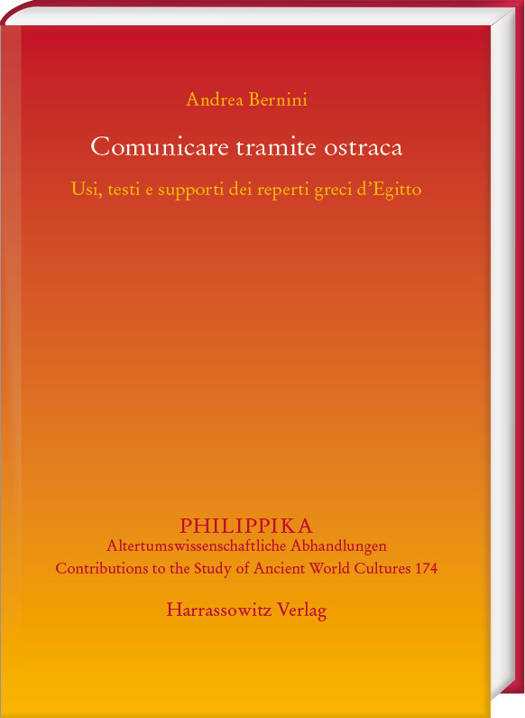
- Afhalen na 1 uur in een winkel met voorraad
- Gratis thuislevering in België vanaf € 30
- Ruim aanbod met 7 miljoen producten
- Afhalen na 1 uur in een winkel met voorraad
- Gratis thuislevering in België vanaf € 30
- Ruim aanbod met 7 miljoen producten
Zoeken
€ 67,45
+ 134 punten
Omschrijving
The volume by Andrea Bernini studies Greek ostraca found in Egypt as a means of communication. Twenty groups of items are selected that are representative of Egyptian evidence under a chronological, geographical and typological point of view. Most of them are documentary, but also literary and semi-literary items are included. They date from the 3rd century BC to the 7th century AD and were found in various sites along the Nile Valley, in the Fayum as well as in Eastern Desert and in the Great Oasis. Bernini structures the book in three main parts, devoted to the presentation of theoretical frameworks, data analysis and discussion of the results. In contrast to traditional approaches, which have viewed ostraca primarily as a historical source, the emphasis here is on the materiality of the written text. The volume examines how scribes as writing surface used potsherds, how texts were structured, and how ostraca were used by people of the ancient world for everyday activities, such as contacting an acquaintance, recording economic transactions, selling certain goods and fulfilling religious duties. The focus is therefore on praxeological, semiotic and linguistic aspects as well as on ecdotic issues, without neglecting the contextualization of the items in their historical environment.
Specificaties
Betrokkenen
- Auteur(s):
- Uitgeverij:
Inhoud
- Aantal bladzijden:
- 274
- Taal:
- Duits
- Reeks:
- Reeksnummer:
- nr. 174
Eigenschappen
- Productcode (EAN):
- 9783447121620
- Verschijningsdatum:
- 22/05/2024
- Uitvoering:
- Hardcover
- Formaat:
- Genaaid
- Afmetingen:
- 180 mm x 25 mm
- Gewicht:
- 1115 g

Alleen bij Standaard Boekhandel
+ 134 punten op je klantenkaart van Standaard Boekhandel
Beoordelingen
We publiceren alleen reviews die voldoen aan de voorwaarden voor reviews. Bekijk onze voorwaarden voor reviews.











